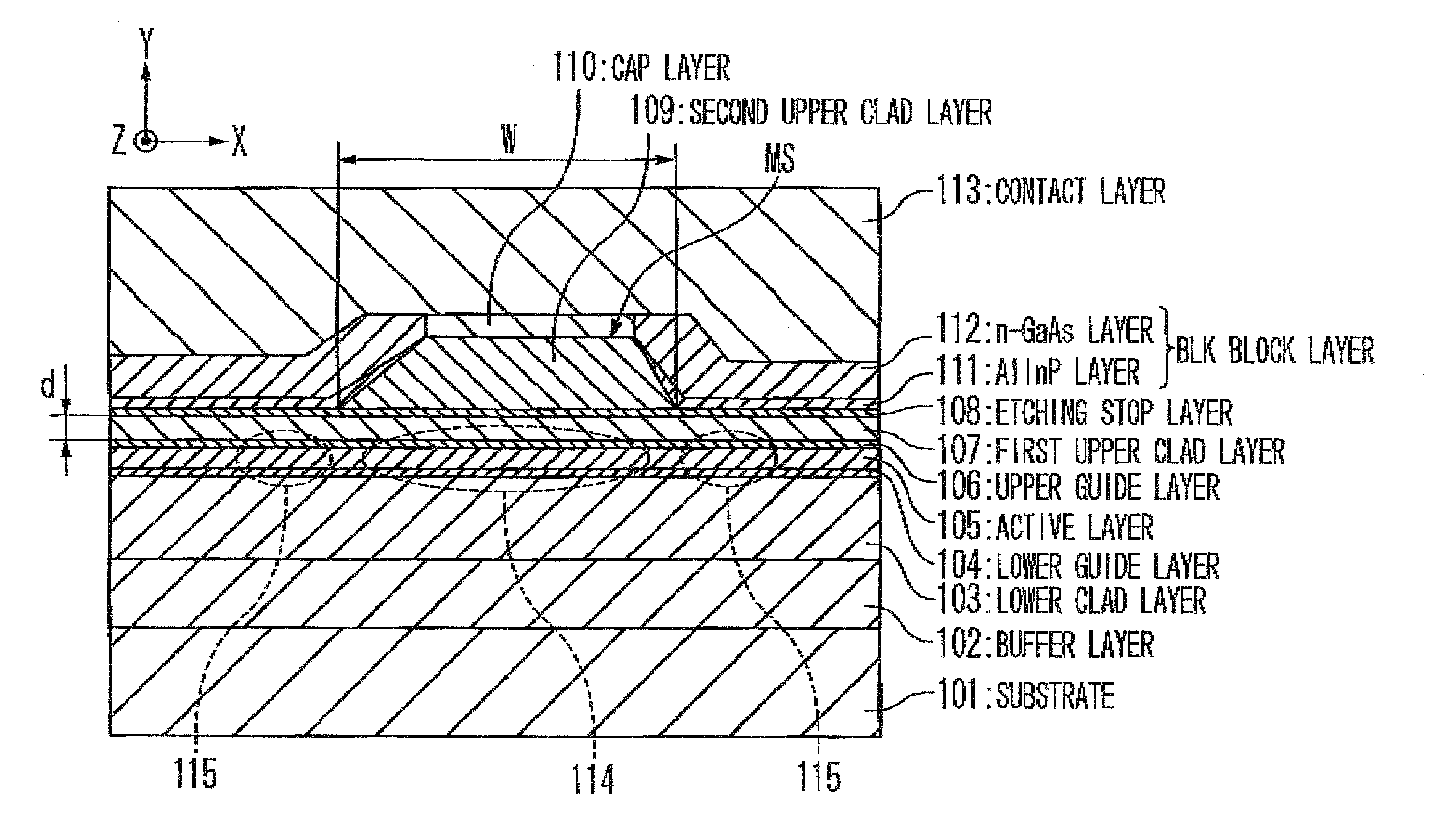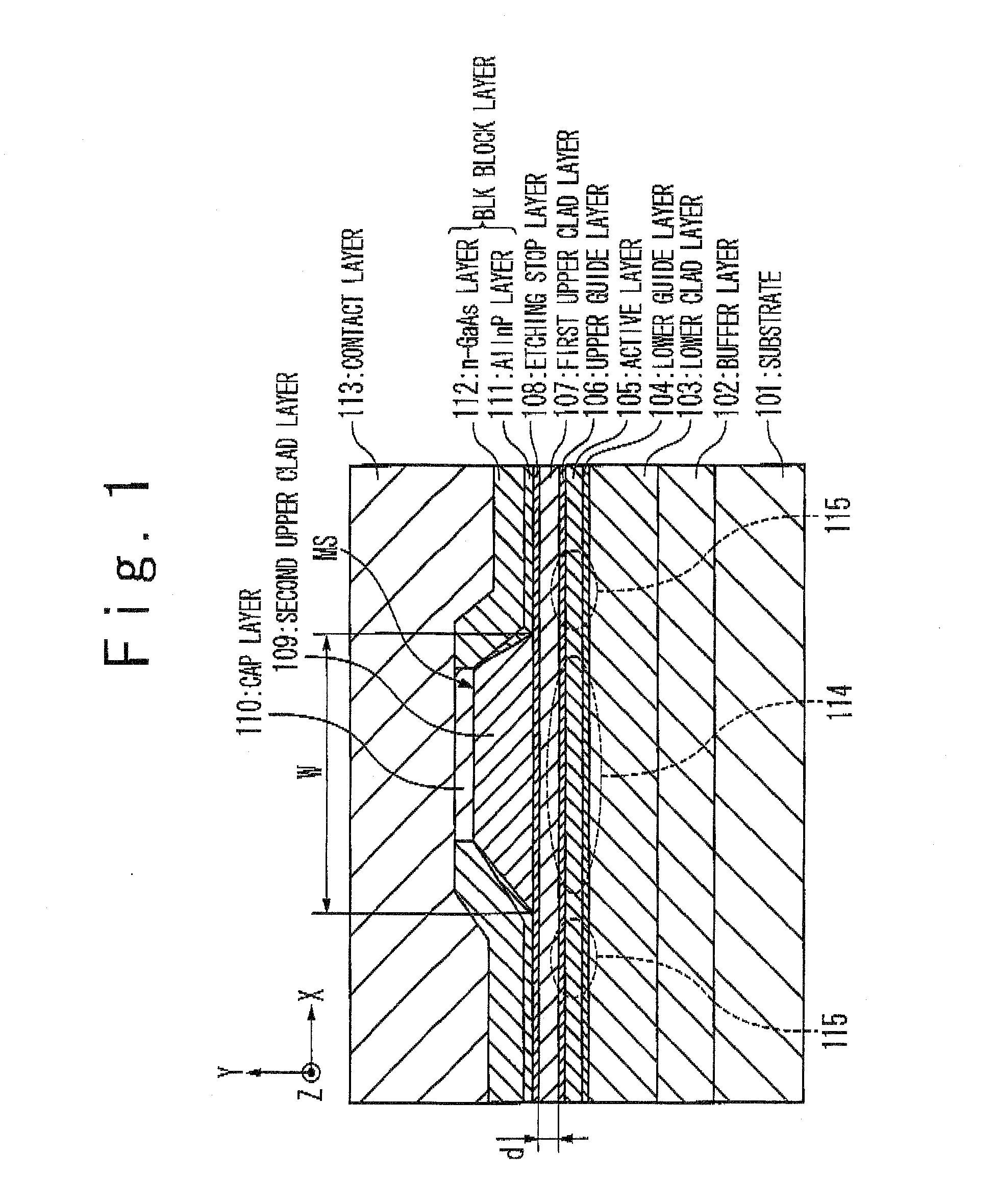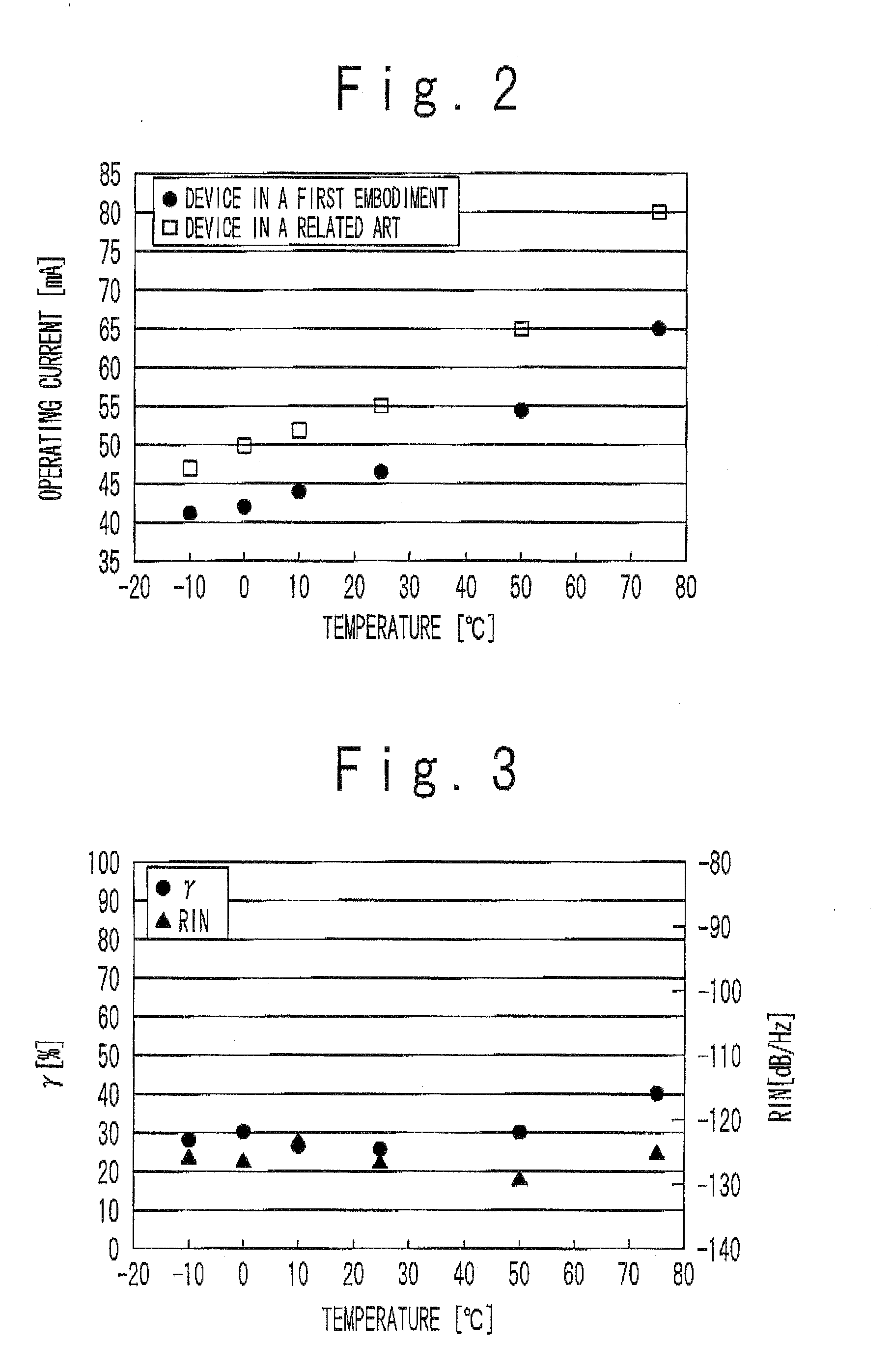Low optical feedback noise self-pulsating semiconductor laser
a semiconductor laser and low optical feedback technology, applied in semiconductor lasers, laser details, electrical equipment, etc., can solve the problems of signal readout error, increased cost, unnecessary radiation (emi: electro-magnetic interference) generation, etc., to achieve stable self-pulsation, improve operation reliability, and reduce operating current
- Summary
- Abstract
- Description
- Claims
- Application Information
AI Technical Summary
Benefits of technology
Problems solved by technology
Method used
Image
Examples
first embodiment
1. First Embodiment
1-1. Structure
[0050]FIG. 1 is a sectional view showing a structure of a self-pulsating semiconductor laser according to a first embodiment of the present invention. In FIG. 1, the Z-direction is an axial direction of a cavity, and the X-direction (horizontal direction) is a direction that is orthogonal to the axial direction of the cavity and in parallel to a p-n junction face. The Y-direction is a direction that is orthogonal to the axial direction of the cavity and vertical to the pn-junction face. The standing waves that appear in the X, Y, and Z directions are called a horizontal transverse mode, a vertical transverse mode, and a longitudinal mode, respectively.
[0051]In FIG. 1, a first conductivity type buffer layer 102 for improving a crystalline property is formed on a first conductivity type semiconductor substrate 101. A “double heterostructure (DH)” is formed on the buffer layer 102. Specifically, an active layer 105 is formed on a first conductivity type...
second embodiment
2. Second Embodiment
[0099]FIG. 9 is a sectional view showing the structure of a self-pulsating semiconductor laser according to a second embodiment of the present invention. In FIG. 9, the same reference numerals are applied to the structure elements that are same as those of FIG. 1, and redundant explanations are omitted as appropriate.
[0100]The block layer BLK according to the present embodiment is constituted only with a first-conductive (AlxGa1-x)0.5In0.5P layer 120 without an GaAs layer. For example, the block layer BLK includes an n-type AlInP layer 120 (x=1). The thickness of the n-type AlInP layer 120 is 1000 nm, for example, and the impurity density is 3×1018 cm−3, for example. With such structure, it is possible to obtain the same effects as those of the first embodiment. The manufacturing method of the semiconductor laser element according to the present embodiment is the same as that of the first embodiment.
third embodiment
3. Third Embodiment
[0101]In the case presented in the first embodiment, the semiconductor laminated structure on the semiconductor substrate 101 is formed with a GaInP / AlGaInP type material, and the emission wavelength is about 650 nm. The present invention is also effective for a self-pulsating semiconductor laser in which the semiconductor laminated structure is formed with a GaAs / AlGaAs type material, and the emission wavelength is about 780 nm. FIG. 10 shows the structure of such self-pulsating semiconductor laser. Explanations that overlap with those of the above-described embodiments are omitted as appropriate. Examples of each layer shown in FIG. 10 will be explained below.
[0102]Semiconductor substrate 301: n-type GaAs
[0103]Buffer layer 302: n-type GaAs; thickness=650 nm; impurity concentration=5×1017 cm−3
[0104]Lower clad layer 303: n-type AlGaAs (x=0.5); thickness=1200 nm impurity concentration=1×1018 cm−3
[0105]Lower guide layer 304: AlGaAs (x=0.34); thickness=80 nm
[0106]M...
PUM
 Login to View More
Login to View More Abstract
Description
Claims
Application Information
 Login to View More
Login to View More - R&D
- Intellectual Property
- Life Sciences
- Materials
- Tech Scout
- Unparalleled Data Quality
- Higher Quality Content
- 60% Fewer Hallucinations
Browse by: Latest US Patents, China's latest patents, Technical Efficacy Thesaurus, Application Domain, Technology Topic, Popular Technical Reports.
© 2025 PatSnap. All rights reserved.Legal|Privacy policy|Modern Slavery Act Transparency Statement|Sitemap|About US| Contact US: help@patsnap.com



